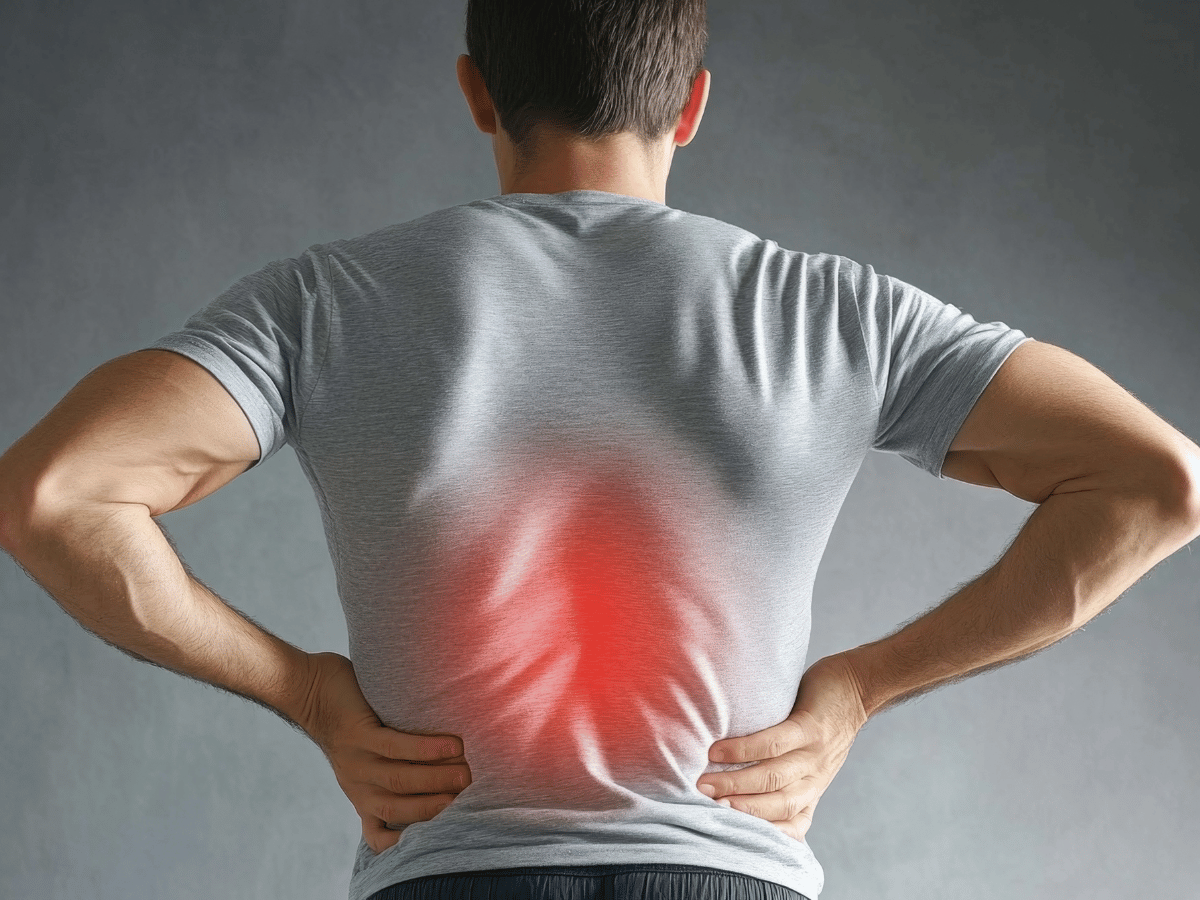
Back pain isn’t just a fleeting annoyance, it’s a condition that affects how we work, sleep, exercise, and live our daily lives. For many of us throughout South Florida, it hits hard and lingers long. Whether it stems from an old sports injury, poor posture at our desk, or years of physically demanding work, one thing is clear: Ignoring it won’t make it go away.
Let’s walk through the facts, treatment options, prevention strategies, and real-life stories that bring this invisible disability out of the shadows and into focus.
Put simply, back pain refers to discomfort felt anywhere along the spine, from the neck to the lower back. But not all back pain is created equal. It may be acute (lasting a few days or weeks) or chronic (lingering for months or even years).
Most people experience:
The location and type of the pain often offer clues about the underlying cause, which is why a thorough evaluation is essential.
According to the CDC, nearly 80% of adults will experience back pain at some point, making it one of the top reasons for missed work and doctor visits.
South Florida’s diverse and active population isn’t immune. In fact, a combination of factors makes the risk higher here:
Back pain carries a significant financial toll, as well, from medical visits and pain medication to lost income and reduced productivity.
Back pain doesn’t stem from one source, it’s often a combination of factors. Let’s explore the most common:
Lifting heavy objects improperly or sudden awkward movements can strain spinal muscles and ligaments.
When the cushioning discs between vertebrae bulge or rupture, they press on nerves, leading to pain and numbness, usually in the lower back.
As we age, spinal discs break down, narrowing space between vertebrae and triggering chronic pain.
Osteoarthritis can affect the lower back, leading to inflammation and stiffness.
Hours spent hunched over desks or phones compress the spine and weaken core muscles, two deadly ingredients for back pain.
Other risk factors include smoking (which decreases spinal blood flow), obesity, and genetic predisposition to spinal issues.
Accurate diagnosis is the foundation for effective treatment. When we assess back pain, we start with a detailed patient history and physical exam.
From there, doctors may order:
By pairing physical symptoms with imaging results, clinicians build a full picture of what’s causing your discomfort.
For many of us, early treatment starts with the basics—and often, those basics work incredibly well.
Short-term rest paired with hot or cold compresses can help alleviate acute pain and reduce inflammation.
Ibuprofen or acetaminophen offers short-term comfort while the spine heals.
Alternative therapies like massage therapy or acupuncture can play a supportive role for certain types of pain.
Investing in proper office chairs, adjusting screen height, and improving sleep posture all help reduce strain.
If conservative care isn’t enough, or if pain worsens, advanced options come into play.
These injections target inflammation directly at the pain source.
A minimally invasive method that disables specific nerves responsible for pain transmission.
When structural damage like herniated discs or spinal stenosis severely impairs mobility, surgery such as spinal fusion or laminectomy may be recommended. This is usually a last resort when all other treatments fail.
Physical therapy is our frontline tool against long-term back pain—and its benefits are hard to overstate.
Therapeutic exercises reinforce the muscles that support your spine.
Guided stretches reduce tension and increase spinal mobility.
A licensed physical therapist tailors each program based on your specific diagnosis and goals.
Regular movement can be medicine. Even gentle yoga, swimming, or walking can help reduce discomfort and prevent future flare-ups.
Let’s move from recovery to prevention. Choices we make every day either support or sabotage our spinal health.
Medicine is evolving. We’re entering a new era of back care thanks to innovations in technology and regenerative medicine.
These therapies aim to repair damaged tissues by activating the body’s natural healing processes.
Virtual visits help patients receive expert care sooner and more consistently, especially for physical therapy follow-up.
Combining medical doctors, chiropractors, physical therapists, and pain specialists creates a comprehensive strategy that treats the whole person, not just the pain.
If you’re experiencing persistent or severe back pain, don’t wait. Our compassionate team at South Florida Multispecialty Medical Group can help you explore personalized treatment options and start your journey toward a pain-free life. Schedule your consultation today.
Symptoms include stiffness, sharp or dull lower back pain, tingling in the legs, and difficulty moving. If symptoms persist over a week, worsen, or affect bowel/bladder function, seek medical attention immediately.
Common causes include muscular strain, herniated discs, arthritis, spinal degeneration, and poor posture. Lifestyle factors like inactivity or obesity can also contribute.
Doctors begin with a physical exam and review of symptoms. Imaging like X-rays, MRI scans, or CT scans helps identify structural or soft tissue causes.
Initial treatments include rest, NSAIDs (like ibuprofen), applying heat or cold, and gentle stretching exercises. Medical evaluation is necessary if pain persists.
Yes, physical therapy, lifestyle changes (such as weight loss and ergonomic improvements), complemented by stress management and consistent exercise.
Very effective. Evidence supports physical therapy for strengthening muscles, improving flexibility, and preventing pain recurrence when customized to individual needs.
Maintain a healthy weight, improve posture, incorporate regular physical activity, build core strength, and use proper lifting techniques.
Surgery is typically considered if conservative treatments fail and imaging reveals significant structural damage, or if neurologic symptoms (e.g., numbness, foot drop) appear.
Your well-being is our top priority. Reach out today to discover how our dedicated team can support your health journey.
Have questions or want to learn more? Use the form below to get started!
Connect with South Florida’s trusted multispecialty care team and take control of your health with compassion and convenience.
©2025 South Florida Multispecialty Medical Group. All Rights Reserved.